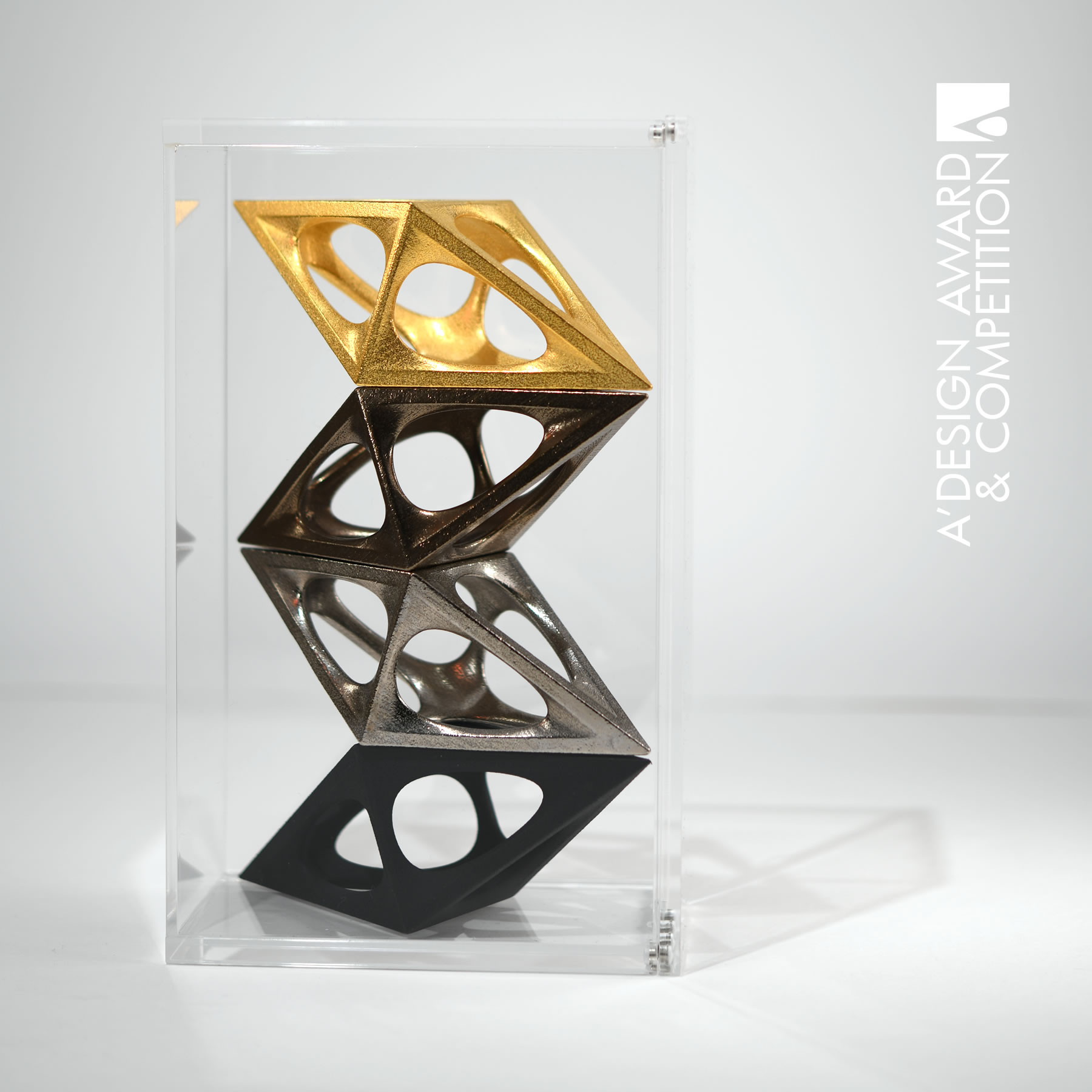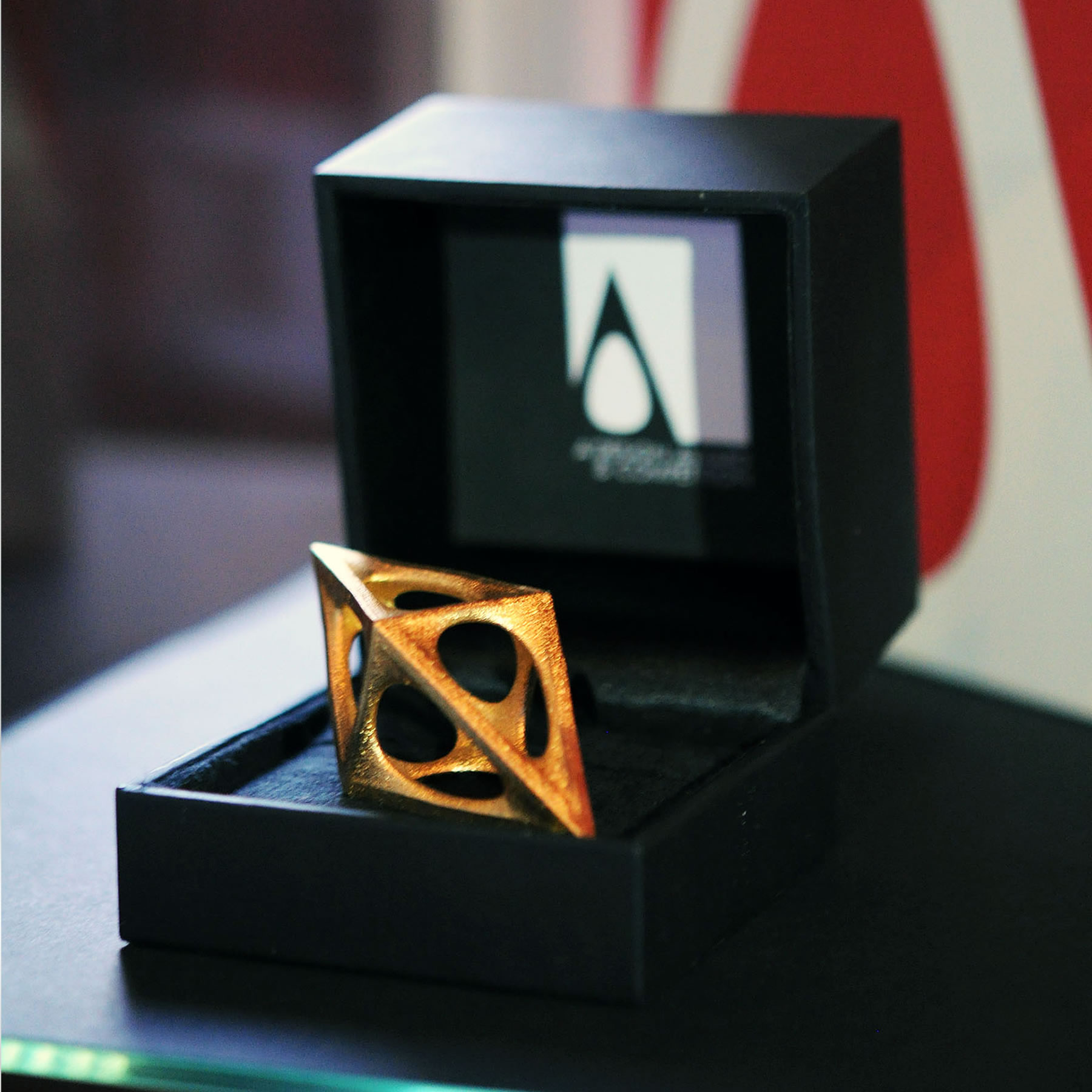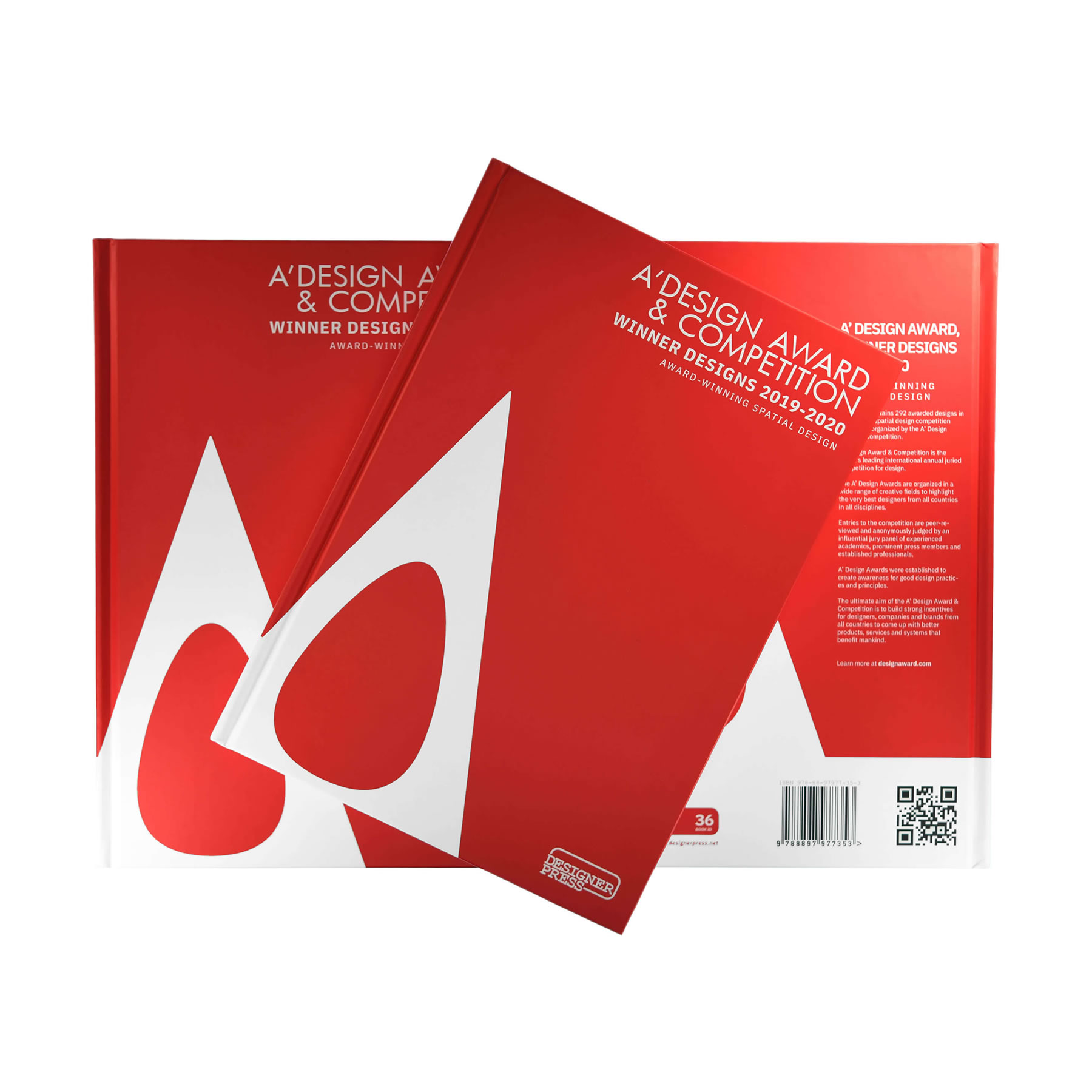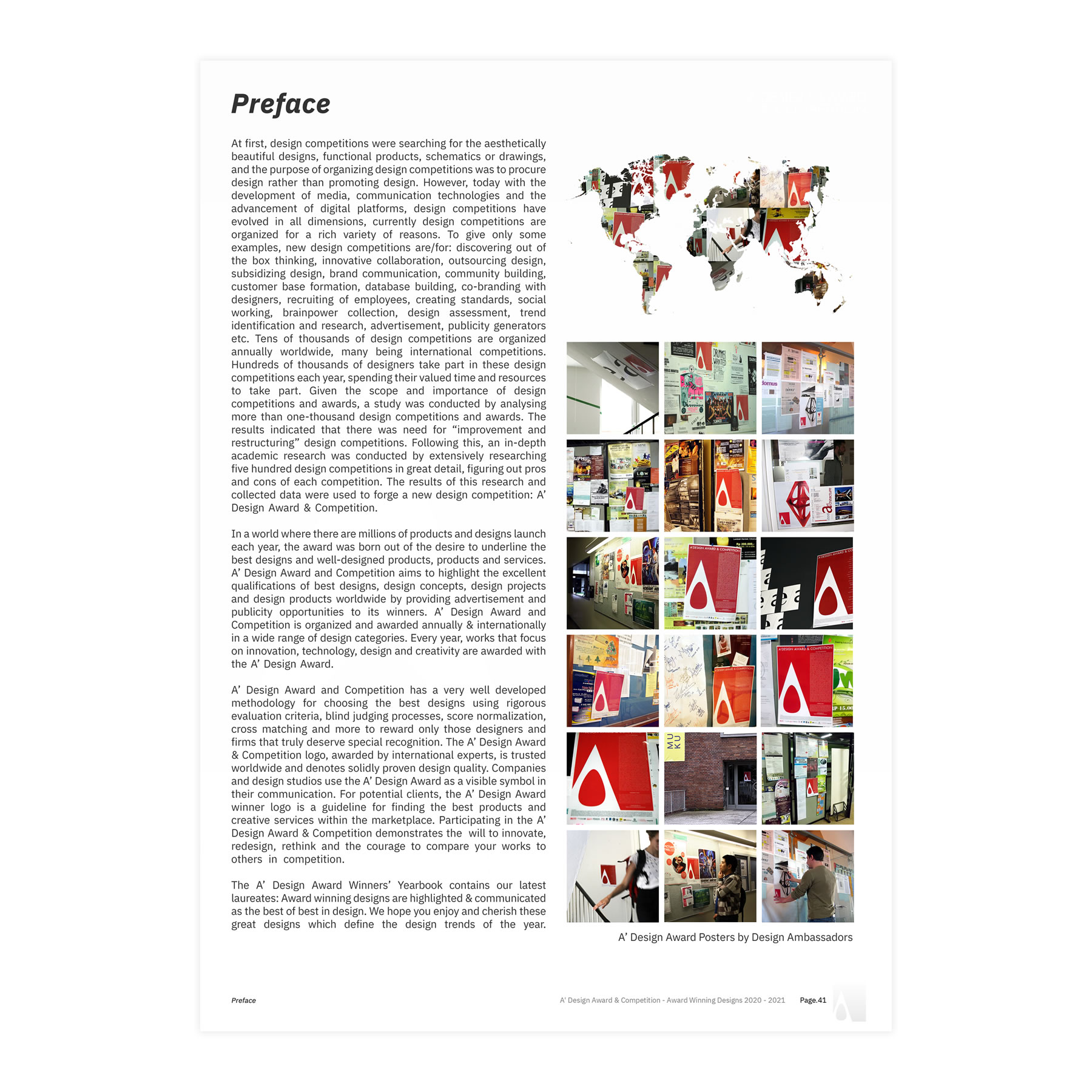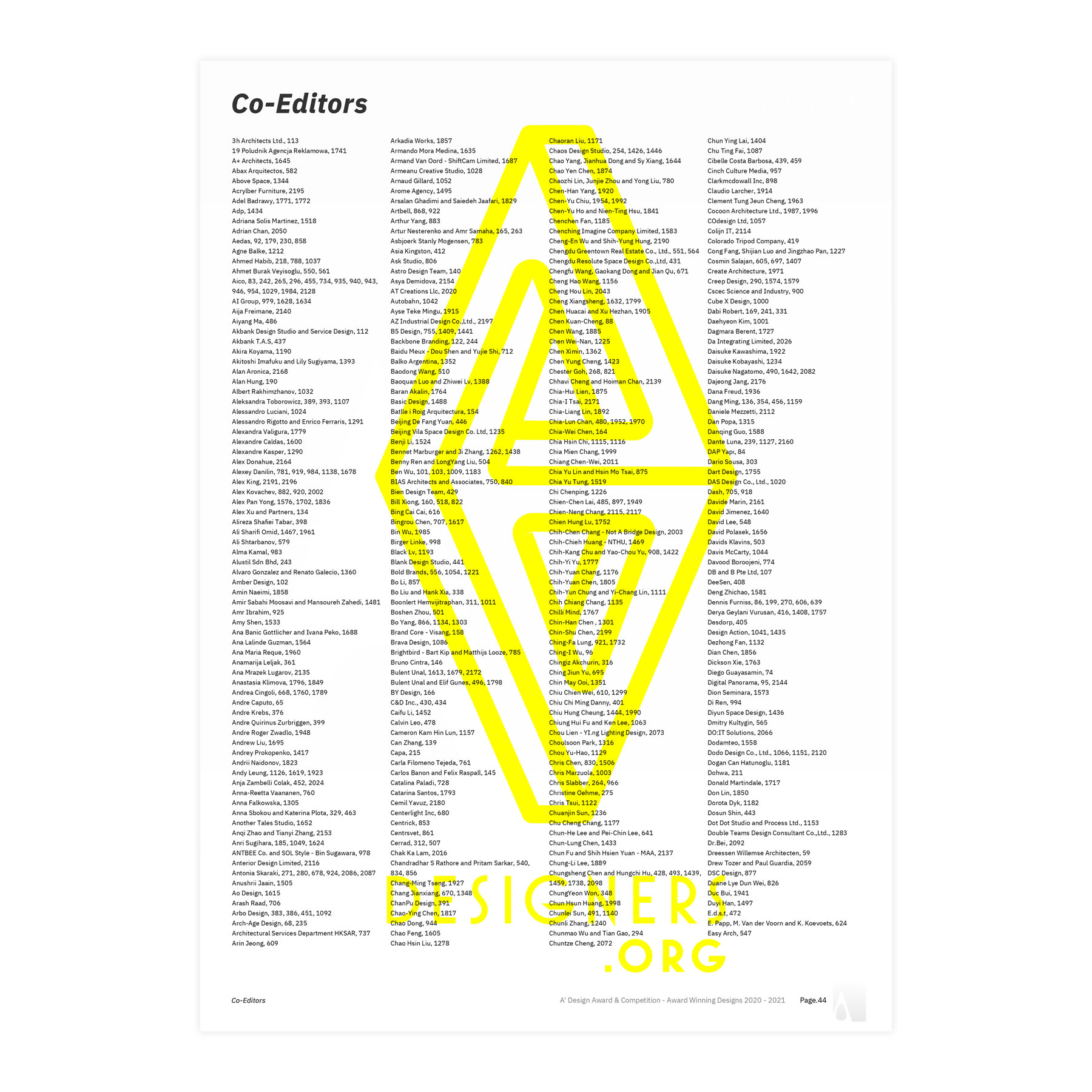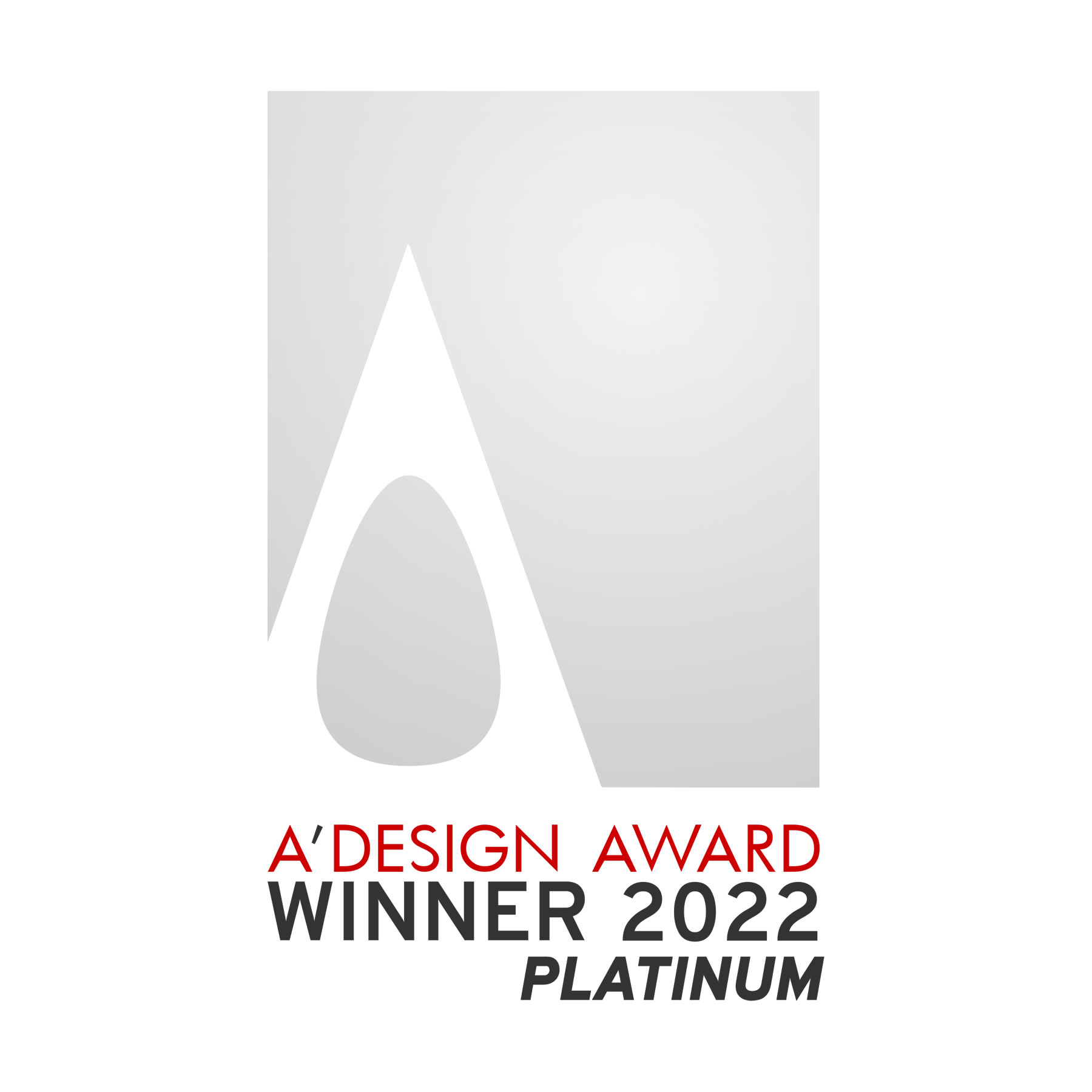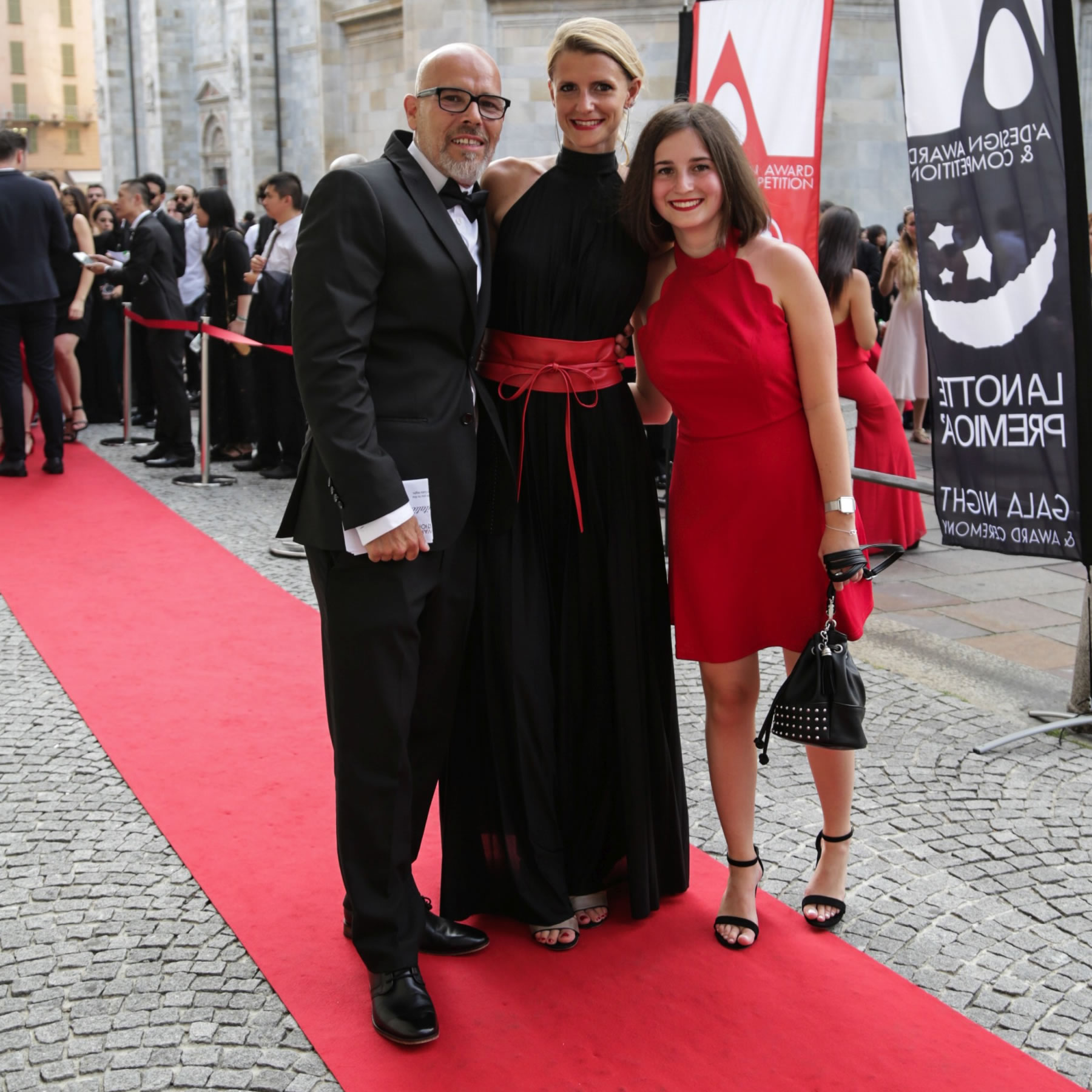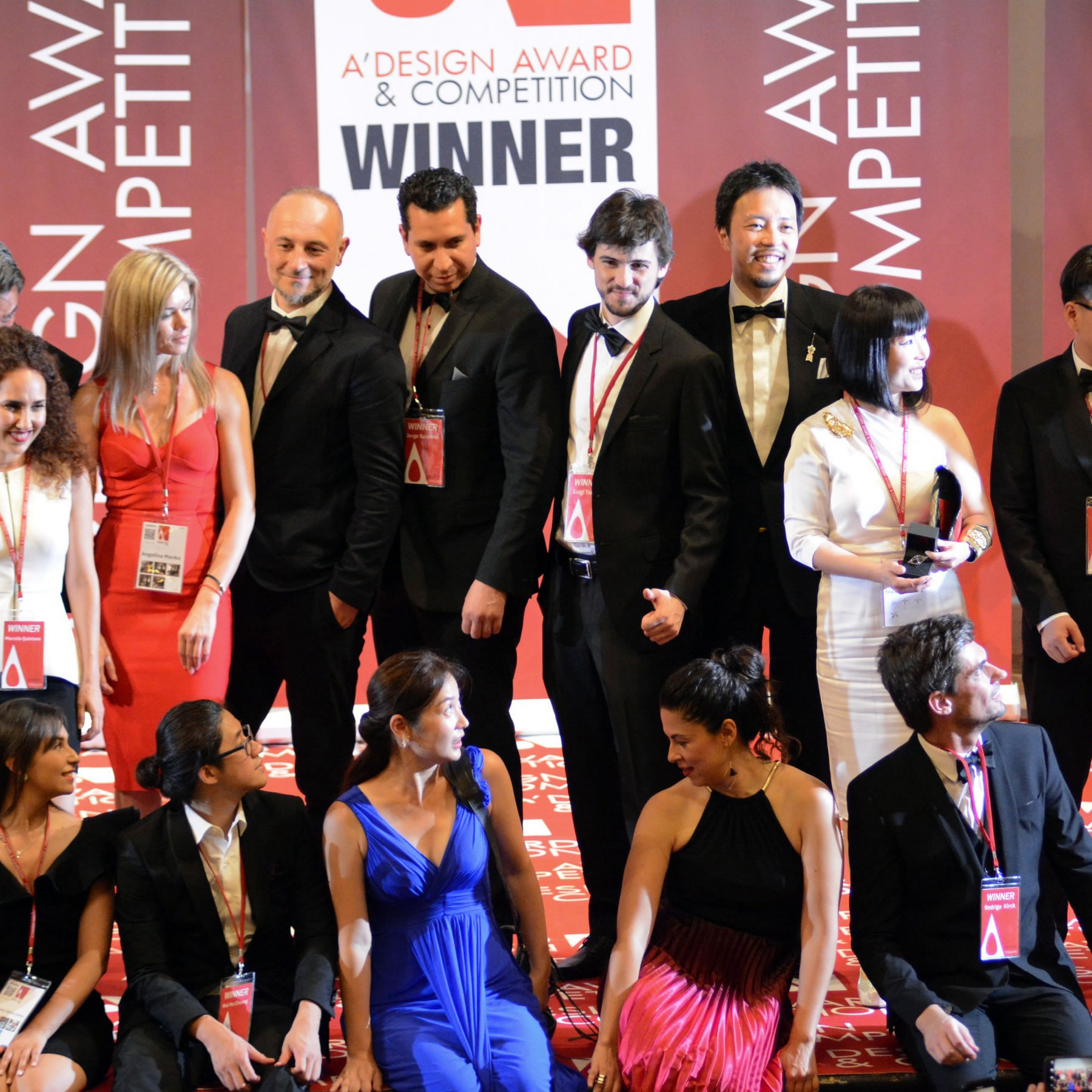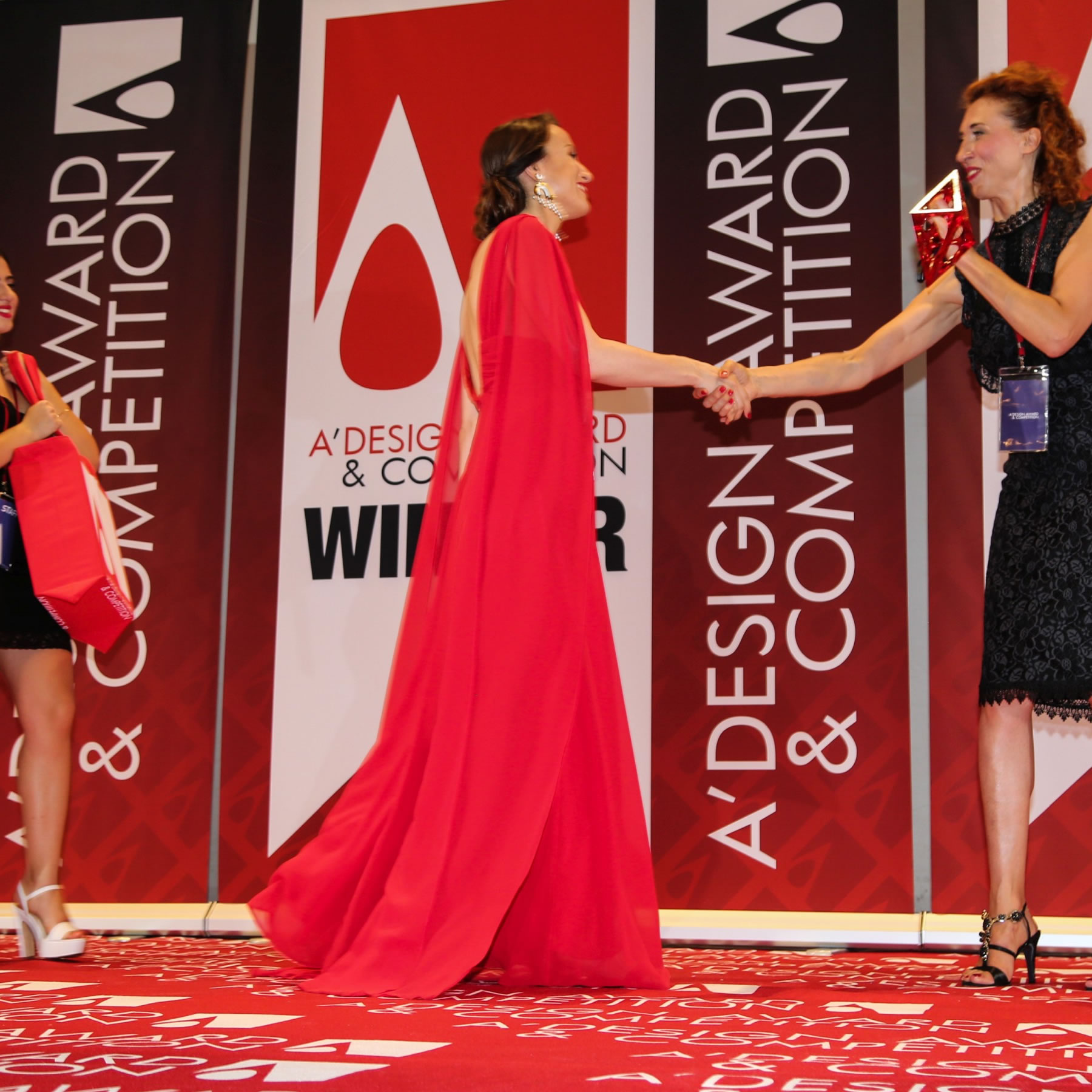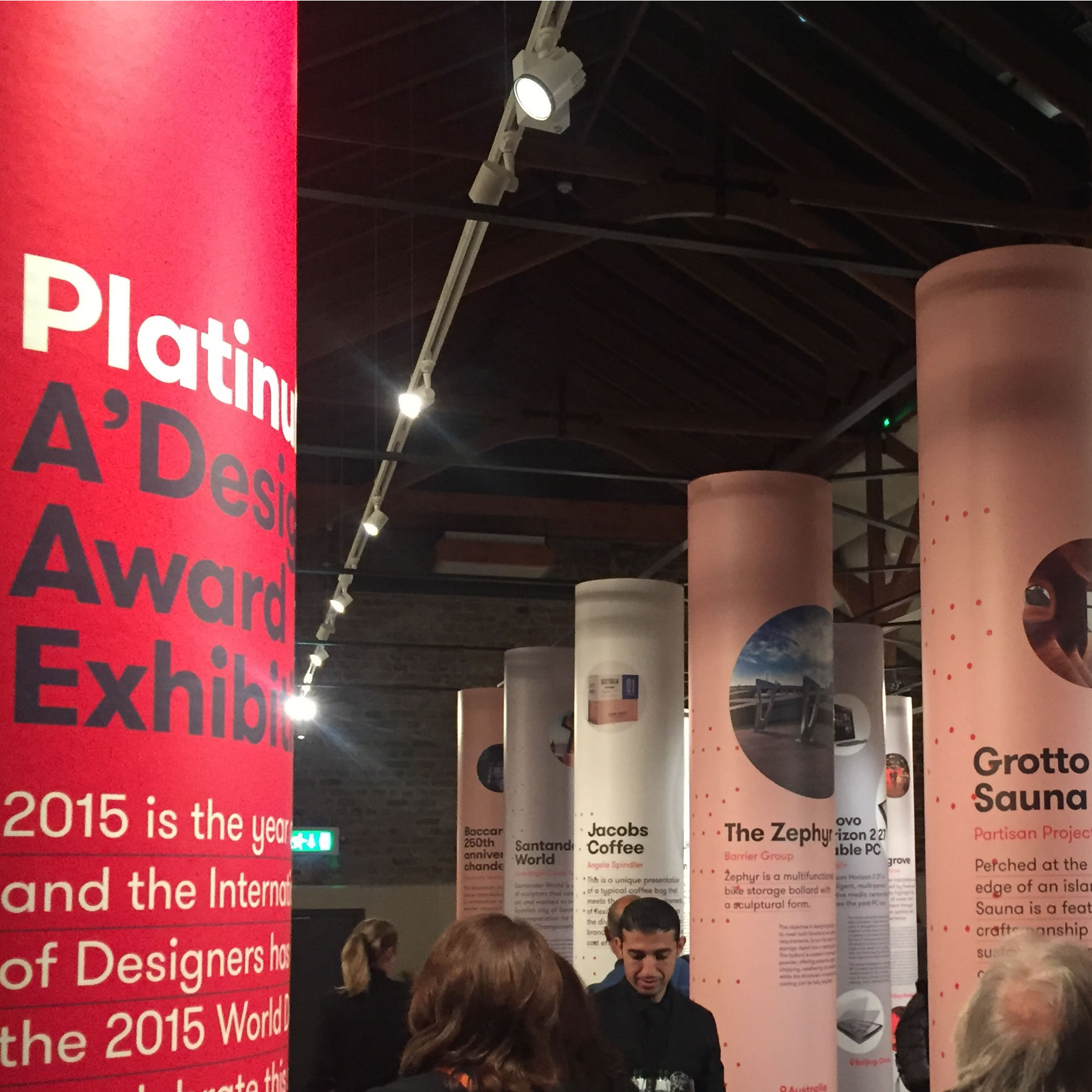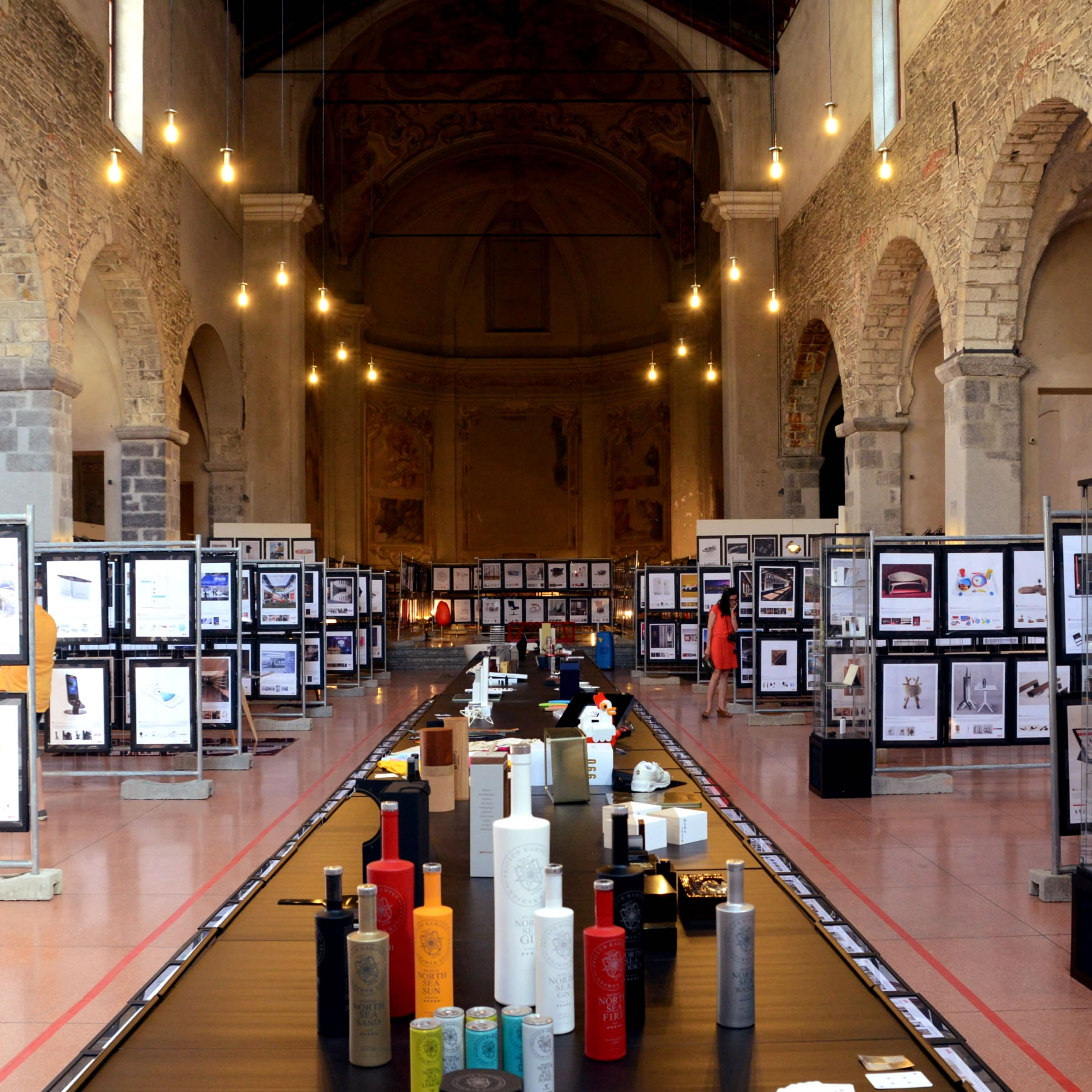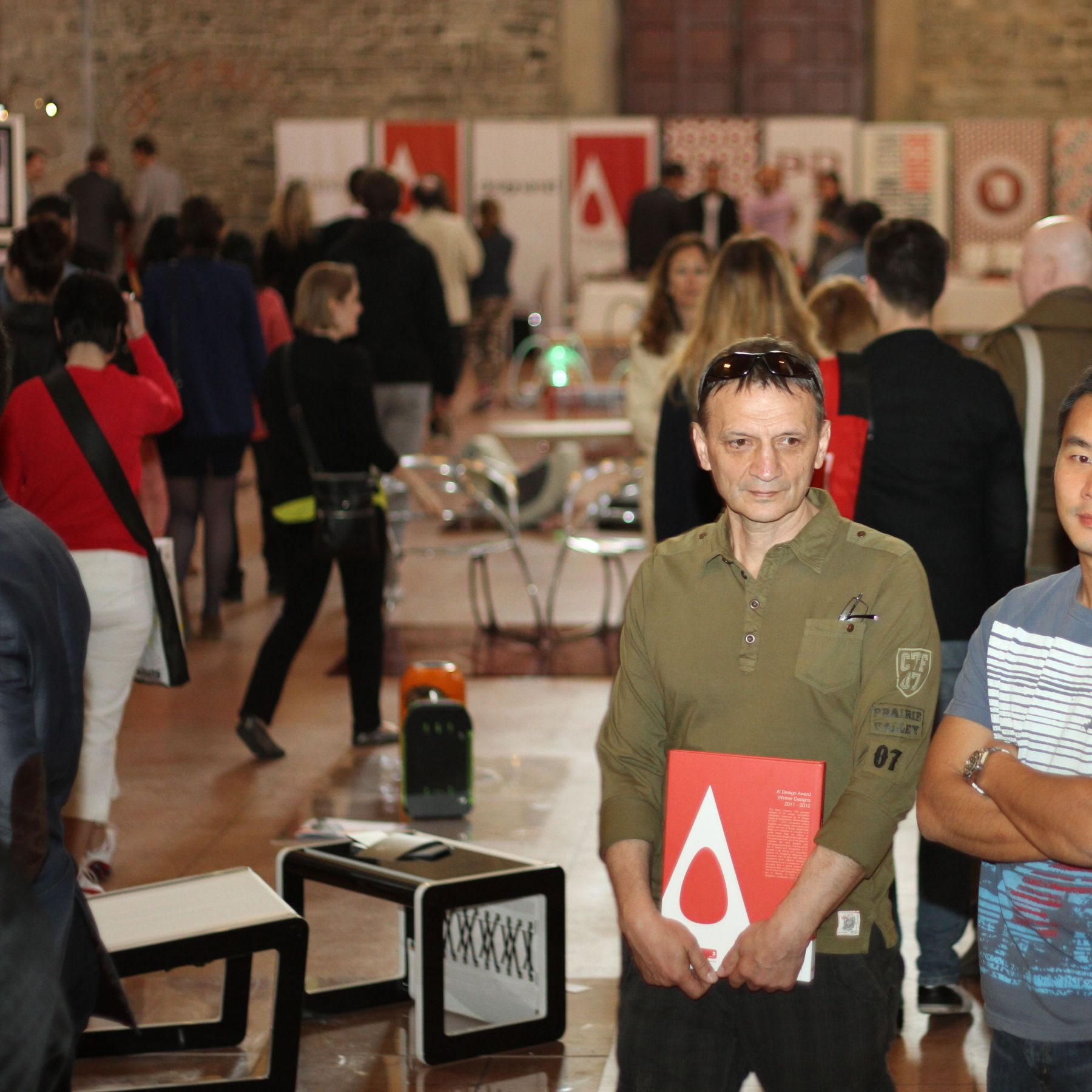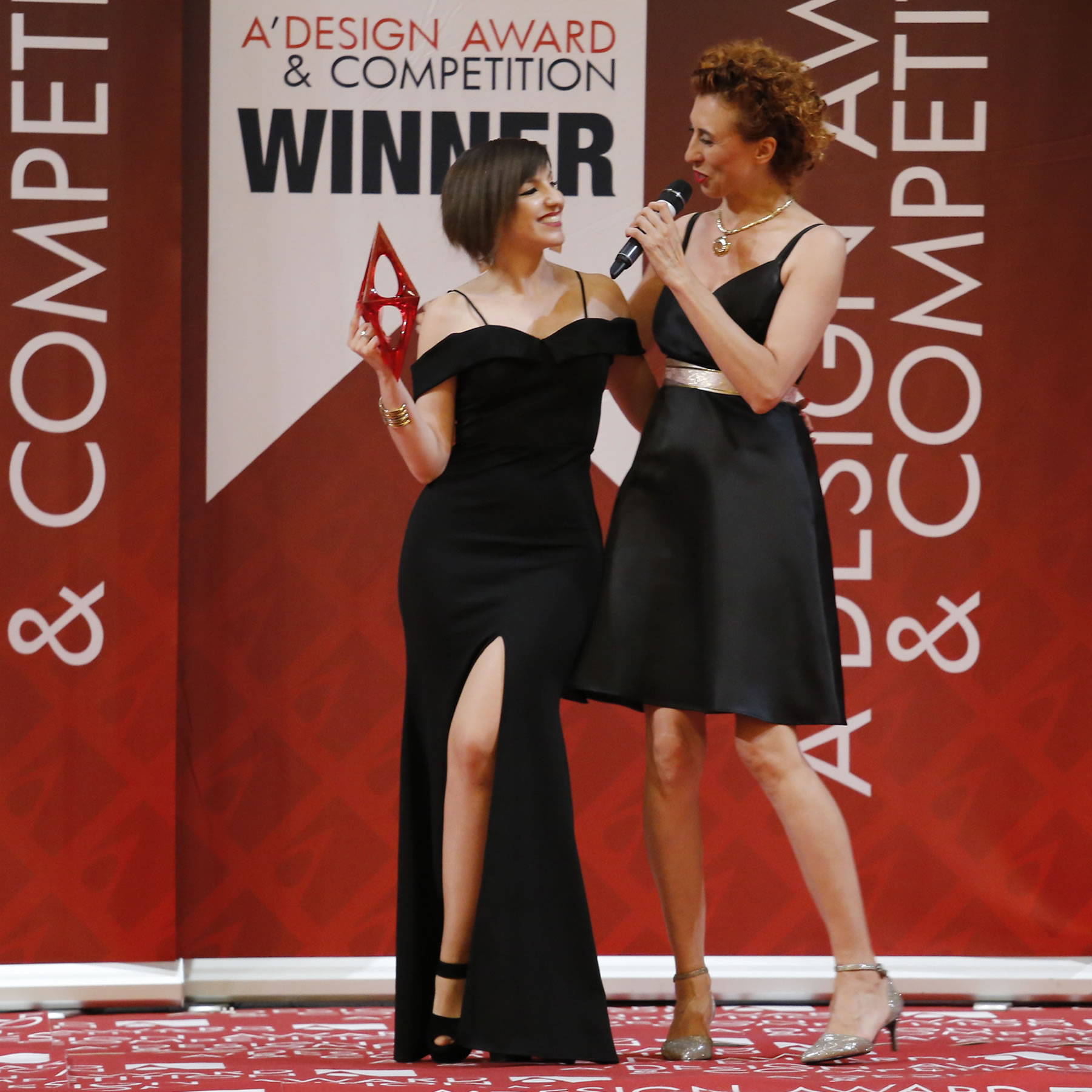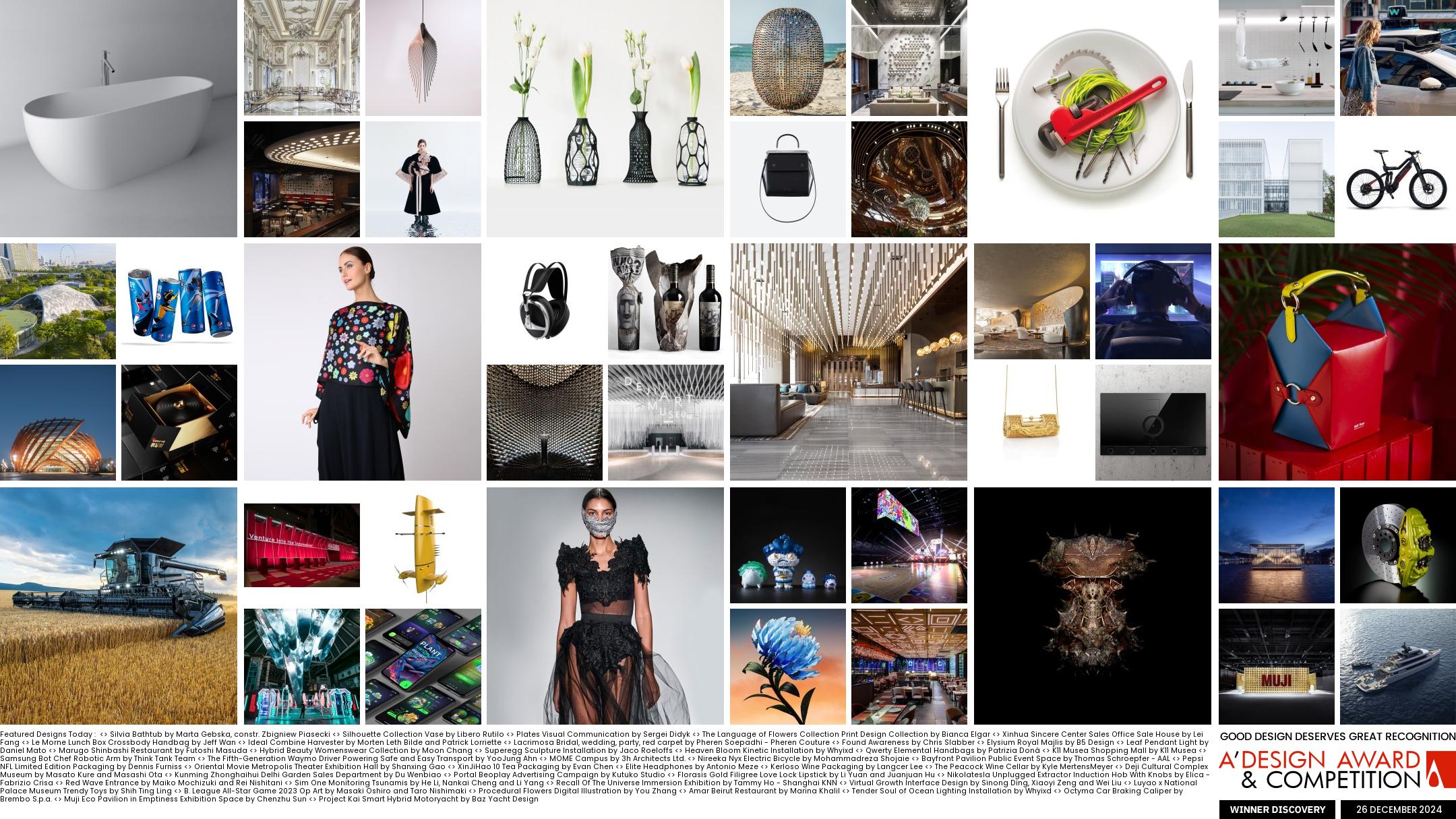A' Robotics, Automaton and Automation Design Award
The A' Robotics Design Award is an international robotics design competition recognizing good robotics designs by robotics designers and engineers worldwide.
The A' Robotics, Automaton and Automation Design Award is a highly-regarded competition that welcomes a wide range of participants, including pioneering robotics and automation designers, inventive design agencies, forward-thinking companies, established brands, and prominent manufacturers from the robotics and automation industries. By taking part in this prestigious award, entrants have the opportunity to showcase their creativity, gain international recognition, and be commended for their outstanding robotic and automation design capabilities, ultimately contributing to the advancement of the robotics and automation industry and inspiring future trends. Participating in the A' Design Award for Robotics is an excellent chance to have your robotics design excellence acknowledged and gain well-deserved global recognition for your good design. Winning the A' Design Prize for Robotics provides an opportunity to acquire global recognition and increased status within the competitive industry.
The A' Robotics Design Award is a highly regarded, very prestigious and internationally recognized design accolade where robotics designers, mechatronics engineers, artificial intelligence researchers and robotics companies across the globe compete to attain national and international fame, showcase their expertise and experience on a global stage, and get recognized for their robotics design excellence and ultimately obtain the A' Design Prize.
Sign-Up NowRobotics Submission Requirements
When submitting to the Robotics Design Competition keep in mind that your submission will be evaluated on multiple dimensions, your robotics design is judged together with its adaptability, safety, ease of operation and self-sustenance. Applicants should send high-resolution images of the robotics, showing the robotics from multiple angles and perspectives together with a textual presentation of their work. The main image is especially important and should be on a white background whenever possible, alternatively a professionally taken photograph in a proper setting with good composition and lighting is acceptable. In addition to images, user manuals, setup instructions, research and references could be uploaded as support documents.
| Item | Dimensions | Format | Notes |
|---|---|---|---|
Main Image Required |
JPEG | The Key Visual should encapsulate the robotic design's most compelling feature, presented in high resolution to underscore its innovation and functionality. A white or neutral background is preferable to ensure the robot stands out, but in cases where the robot's color or material is white or particularly light, a contrasting background that complements the design without overshadowing it may be more suitable. | |
Optional Image 1 Required |
72 DPI |
JPEG | Showcase Image 1 ought to present the robot in an alternative configuration or environment, illustrating its adaptability and the range of applications it can perform. Whether the robot is shown in a laboratory setting, a factory floor, or interacting with humans, the image should provide a clear context for its use, emphasizing the design's versatility and practicality. |
Optional Image 2 Recommended |
72 DPI |
JPEG | Showcase Image 2 should zoom in on a unique technological feature or mechanism of the robot, offering a detailed view that reveals the complexity and precision of its engineering. This close-up should invite appreciation for the craftsmanship and highlight any innovative components or materials that set the robot apart from existing solutions. |
Optional Image 3 Recommended |
72 DPI |
JPEG | For Showcase Image 3, the robot should be depicted in action, performing a task or function that showcases its capabilities and efficiency. The image should capture a dynamic moment that conveys the robot's speed, strength, or precision, providing a tangible sense of how it operates within its intended environment. |
Optional Image 4 Recommended |
72 DPI |
JPEG | Showcase Image 4 needs to focus on the human-robot interaction, demonstrating the user interface or how the robot serves or collaborates with people. This image should convey the ease of use, safety features, and ergonomic design, illustrating how the robot integrates into human activities and workflows. |
| Documentation PDF Document Highly Optional |
A4 Page Size |
Documentation must include comprehensive technical specifications, diagrams, and user manuals that detail the robot's design process, components, and functionalities. It should provide a clear understanding of the robot's capabilities, the problems it addresses, and its technological advancements, ensuring a complete appreciation of the design's complexity and thoughtfulness. | |
| Video Video / Audio File Highly Optional |
AVI | The video should be a well-produced demonstration of the robot in operation, highlighting its movement, functionality, and interaction with its environment or users. It should effectively communicate the robot's purpose, the technology behind it, and its benefits, offering an engaging visual narrative that complements the static images. |
72 DPI
72 DPI
72 DPI
72 DPI
A4 Page Size
Up to 45 Sec.
|
A' Design Award Catalog We have prepared a Catalog, explaining the A' Design Prize, Account Types, Entry Instructions and Award Categories. Download our Full Catalog (PDF) or download the Robotics Category Catalog Page (PDF). |
|
Robotics Evaluation Methodology
At the heart of the A' Robotics, Automaton and Automation Design Award is our commitment to celebrating excellence in robotics design through a fair and transparent evaluation process. The cornerstone of our judging system is a diverse and expert jury panel, comprising established academics, leading design professionals, prominent journalists, and influential entrepreneurs. This eclectic mix ensures a rich variety of perspectives in evaluating the merits of each design. Prior to the main assessment, a preliminary jury diligently works with all entrants to standardize the presentation quality of their submissions. This critical step is designed to eliminate any presentation biases, ensuring that every nomination is judged solely on its design quality, creative and functional merits, and not on its presentation. Our blind peer-review process further reinforces this impartiality, where entries are evaluated anonymously, safeguarding against any undue influence from political affiliations or personal biases. Jurors are bound by a strict agreement to uphold fairness and integrity in their judgment, with their votes being meticulously analyzed for any anomalies. Our rigorous process involves the standardization and normalization of jury votes, followed by a sophisticated statistical ranking based on standard deviations. This method allows us to objectively evaluate the consistency of each design's reception among jurors, ensuring that those designs with uniformly high ratings are distinguished. Designs are then ranked according to these evaluations, from the most consistently acclaimed to the least, with adherence to our established award-level thresholds - platinum, gold, silver, bronze, and iron. This methodical approach not only ensures a meritocratic competition but also imbues our participants with confidence that their robotics designs are evaluated purely on their intrinsic qualities and merits.
Robotics Evaluation Criteria
Best robotics are selected according to Innovation in Robotics Design, Efficiency of Mechanism, Safety Measures, Ease of Control, Adaptability to Environment, Aesthetic Appeal, Durability and Robustness, Energy Consumption, Cost-Effectiveness, Integration of Technologies, Scalability of Design, User-Friendly Interface, Precision in Task Execution, Maintenance Simplicity, Versatility in Function, Sound Design, Material Selection, Sustainability Considerations, Inclusion of AI Elements and Future-Proof Design.
Robotics Entries
The Robotics Award is open for all type of robotics, including but not limited to robotics design, automaton innovation, automation systems, industrial robots, service robots, robotic arms, autonomous vehicles, home automation systems, factory automation, medical robotics, agricultural robots, underwater robots, robotic prosthetics, drone technology, automation software, robotic toys, space exploration robots, robotic exoskeletons, robotic surgical systems, automated guided vehicles, warehouse automation, robotic process automation, intelligent automation, robotic-assisted design, automated retail solutions, robotic cleaners, automated manufacturing, automated factories and security and surveillance robots.
No Further Fees Policy
Pro-Edition, Digital-Edition and Vision-Edition do not have contractually obliged winner fees. Professional and Digital Edition winners of the A' Robotics, Automaton and Automation Design Award are not contractually obliged to pay any "further fees", "hidden fees" or "winner fees" for claiming the A' Design Prize. The A' Design Prize is awarded free of charge to all eligible laureates, ensuring there is no confusion of price and prize. The prestigious A' Design Award program distinguishes itself by ensuring its laureates are exempt from the typical charges often required by other robotics award programs; such as Publication Fees, Exhibition Fees, Award Ceremony Tickets, Logo Licensing Fees, Marketing and Advertising Fees, Membership Fees, Certificate Fees, Trophy Fees, and any other "contractually obliged further fees for winners". Eligible laureates receive the comprehensive A' Design Prize free of charge, without any additional costs, solely by achieving victory in the A' Design Award & Competition. This does not apply to Classic-Edition which has winner fees.
Vision
The vision of A' Robotics, Automaton and Automation Design Award is centered on empowering designers and innovators with a platform that not only celebrates creativity but also significantly boosts their commercial success. A' Robotics, Automaton and Automation Design Award is designed to be a catalyst for increasing robotics sales, enhancing brand exposure, and providing a valuable opportunity for differentiation in a competitive marketplace. By winning the A' Robotics, Automaton and Automation Design Award, you will be eligible to obtain a lifetime license to use the exclusive A' Design Award Winner Logo, a mark of excellence and innovation, a distinguished symbol that sets your products apart in the market. The A' Robotics, Automaton and Automation Design Award is a strategic tool for trendsetting, attracting consumer and media interest, and forging lasting brand value, showcasing your commitment to good design, innovation and quality. The ultimate aim of the A' Design Awards is to incentivize designers, brands and institutions that help create a better world with superior products and projects that benefit and advance society by recognizing their original contributions and good designs.
A' Design Award in Numbers
Impressions
Pageviews
Registrations
Award Winners
Judges
Categories
Nationalities
Press Mentions
Years
Benefits
Winning the A' Robotics, Automaton and Automation Design Award offers a multitude of prestigious benefits, encapsulating recognition, exposure, and opportunities for growth in the robotics industry. The top three standout benefits include the A' Design Award Winner Logo, symbolizing excellence in robotics design and global recognition; the extensive PR campaign and media exposure, featuring syndication across various networks, thereby enhancing visibility and credibility in the robotics design community; and inclusion in exclusive networks and rankings, such as the World Design Rankings and International Design News Network, providing networking and outreach opportunities. Additionally, Pro-Edition winners receive a comprehensive winner's kit during the Gala-Night and Award Ceremony in Italy. The physical components of the A' Design Prize, distributed during the award ceremony to eligible laureates, include, but are not limited to, the award trophy, a printed and framed certificate of excellence in robotics design, as well as the annual yearbook, featuring the year's best robotics designs. The A' Design Prize further includes digital and physical exhibition opportunities for eligible laureates, among 188+ benefits and services.
Robotics Award Participants
The Robotics Award is open to Robotics Designers, Automation Engineers, Robotics Brands, Robot Manufacturers, Industrial Designers, Electronics Engineers, Mechatronics Engineers, Artificial Intelligence Specialists, Machine Learning Experts, Software Developers, Hardware Engineers, System Integrators, Control System Designers, Automation Consultants, Robotics Professionals, Industrial Automation Designers, AI Developers, Robotics Innovation, Robotic Process Automation Experts, Consultancy and Research and Development Companies from all countries.
Value Proposal
Winning the A' Robotics, Automaton and Automation Design Award symbolizes a significant achievement in robotics industry, offering winning brands worldwide acknowledgment, international recognition, prestige and esteem. The A' Robotics, Automaton and Automation Design Award serves as a testament to robotics design excellence, enhancing your brand's global reputation. A' Design Award Winner designs are showcased across a multitude of platforms, receiving attention from a diverse international audience. This exposure is not just about visibility; it is an endorsement of design ingenuity and creativity, placing the laureates on a global stage where their robotics design is celebrated and appreciated. The translation of their accomplishments into various languages further broadens this recognition, ensuring their winning robotics designs resonate across different cultures and markets.
Participation in the A' Robotics, Automaton and Automation Design Award opens doors to a world of networking opportunities with robotics industry leaders and creative minds. This interaction goes beyond mere connections; it fosters potential collaborations and partnerships, expanding professional horizons. The award ceremonies, exhibitions and related events offer a unique platform for personal interaction, while digital showcases and online communities provide continued engagement. These interactions are invaluable for any robotics brand or institution seeking to grow their professional network, explore new collaborations, connect with journalists, engage with media, persuade influencers and gain insights from global design leaders.
The A' Robotics, Automaton and Automation Design Award acts as a powerful marketing instrument. Award winners are equipped with promotional assets and tools, including a distinctive award logo that signifies symbolizes excellence in robotics design. The A' Design Award Winner emblem can be a game-changer in differentiating a brand in the competitive market, attracting new clients, and building trust with the existing customer base. Moreover, the robotics award offers an educational aspect through expert feedback and resources, guiding participants towards better design practices. This educational value is crucial for ongoing development and inspiration, encouraging continuous innovation and excellence in design. A' Design Award is a catalyst for growth, renown, recognition, and global engagement in the robotics industry, bringing fame, prestige and publicity to its laureates.
Sign-Up NowUnlock Your Design's Potential
Before You Compete,
Discover How Your Robotics Design Measures Up
With our Preliminary Checking Service, get valuable insights from industry experts. Understand how your design stands in the competition and what you can do to enhance it. It's simple, it's insightful, and it's your first step towards potential recognition.
Create Your Account
Sign Up for Free
Start by creating your account. Join our community of creative minds and robotics professionals.
Upload Your Design
Showcase Your Product
Easily upload high-resolution images and details of your robotics design. Tell us your design story.
Receive Your Score
Gain Valuable Insights
Receive a free, confidential score and expert feedback to polish your robotics design. before the final submission.
Testimonials
Celebrating Design Innovation Through Our Winners' Experiences
2026 Robotics Design Awards
Schedule and Entry Periods for the 2025 - 2026 Robotics Award are noted below. Participate in the 2026 Robotics Design Awards with diverse entry periods, each tailored to your readiness and preference.
Early Entry Period
April 1st
to June 30th
annually.
Standard Entry Period
July 1st
to September 30th
annually.
Late Entry Period
October 1st
to February 28th
annually.
Detailed Schedule for the 2025 - 2026 Edition
| Step | Description | Period |
|---|---|---|
| 01 |
Design Submission First step of entry is to submit your work. Submission is free. Update your work anytime until voting begins. You will get free design score and suggestions to improve your entry. |
April 21, 2025 to February 28, 2026 |
| 02 |
Design Nomination There are three main entry periods: Early, Standard, and Late. There are also First Bird, Late and Last periods. We recommend you nominate your work latest by the Late entry period. |
April 21, 2025 to February 28, 2026 |
| 03 |
Design Modifications Unlimited revisions or changes to your entry are allowed until the end of the Late entry period, or once the jury starts voting on your entry for those who entered during Last or Omega Entry periods. |
April 21, 2025 to March 30, 2026 |
| 04 |
Winning Designs Informal non-official results are first announced to winners. At this stage, winners are prohibited from sharing their results as they are not yet final. |
April 15, 2026 to April 21, 2026 |
| 05 |
License and Declarations Designers are requested to upload licenses permitting us to publish their awarded works in books, and on local and international publications, exhibitions, social media, and design platforms. |
April 15, 2026 to April 28, 2026 |
| 06 |
Yearbooks Sent to Print Yearbook page drafts are created. Issues in text, images, naming, and account types are resolved, and yearbooks are prepared in both digital and hardcover editions before being sent to print. |
April 29, 2026 to May 5, 2026 |
| 07 |
Official Winner's Announcement Winners are informed about their final award status, and their results are published online at the A' Design Award winners' list and syndicated to other design news platforms. |
April 29, 2026 to May 5, 2026 |
| 08 |
Winner's Kit Shipment Orders Pro-edition winner kits are distributed during the gala-night and award ceremony. Shipment orders can be made for those not attending the gala. |
April 29, 2026 to May 31, 2026 |
| 09 |
Exhibition Items Shipping Award-winning designers are invited to send their works for design exhibitions in Italy and abroad. The physical exhibition is free for pro-edition entrants. |
April 29, 2026 to May 31, 2026 |
| 10 |
Gala-Night and Award Ceremony The gala-night and award ceremony are key events for celebrating winners' achievements. Dates are announced in advance and Pro-edition winners receive free invitations. |
As noted in Gala-Night & Ceremony. |
| 11 |
Cocktail Party, Dinner and Luncheon Ars Futura Cultura meetings, Pre-Gala Cocktail Party, Post-Gala Dinner, and Happy Lunch bring together winners for networking and celebration. |
As noted in Ars Futura Cultura. |
| 12 |
Design Exhibition in Italy The A' Design Award Winner's exhibition is first organized in Italy, often coinciding with the gala-night for added guest pleasure. |
As noted in Design Exhibitions. |
| 13 |
Design Exhibitions Abroad Italy Award-winning designs are exhibited in multiple countries and cities each year, with no additional fees or costs. On average, six more exhibitions are held annually. |
As noted in Design Exhibitions. |
| 14 |
Media Placements The media campaign starts with the announcement of results, including the preparation of electronic press kits and outreach to journalists. |
May 8, 2026 to January 8, 2026 |
| 15 |
Design Rankings Design rankings are updated annually. For instance, the World Design Rankings are updated at the beginning of each year in January. |
July 8, 2026 to January 8, 2027 |
| 16 |
Public Relations Campaign The Public Relations Campaign for award winners takes the whole year, usually lasting from the moment of award results announcement to the conclusion of the competition period. |
April 29, 2026 to April 7, 2027 |
Robotics 2025 - 2026 Awards
Entries are Open Now!
Don't miss your chance to showcase your Robotics and gain global recognition. Enter your product in the Robotics Design Awards today!
Sign Up for Free
Submit Your Design
Frequently Asked Questions
Winning the A' Robotics, Automaton and Automation Design Award offers your brand a significant competitive edge. The most notable advantage is the privilege to use the A' Design Award Winner Logo, a symbol of design excellence and design quality. This prestigious logo can be integrated into your brand's marketing and visual identity, greatly enhancing credibility and prestige. It serves as a powerful tool to influence customer decisions, boost brand visibility, and drive sales.
Displaying the A' Robotics, Automaton and Automation Design Award Logo also reflects your commitment to innovation and superior robotics design, setting you apart from competitors. It's an effective way to attract attention from journalists, influencers, and potential clients, leading to increased market presence and recognition.
Internally, this achievement fosters a culture of excellence and innovation within your organization, boosting employee morale and attracting top industry talent. It also strengthens business relationships, creating opportunities for growth and expansion.
Winning the A' Design Award and using the Winner Logo in your communications can significantly enhance your brand's market position, lead to increased demand and potentially increased sales, and provide a lasting impact on consumer preferences and purchasing decisions.
Absolutely! We wholeheartedly welcome robotics designs that have already achieved recognition in other competitions. Participating in the A' Robotics, Automaton and Automation Design Award with a previously awarded product is not just an opportunity; it's a strategic move to further elevate your design's status on an esteemed international platform.
Winning or being recognized in another competition showcases the quality and creativity of your design, and presenting it at the A' Robotics, Automaton and Automation Design Award can amplify its acclaim, opening doors to new markets, audiences, and opportunities. This is your chance to showcase your design's versatility and appeal to a global audience, which can lead to increased visibility and potential collaborations.
Furthermore, being recognized in multiple prestigious accolades can significantly enhance your design's credibility and the reputation of your brand or studio. It serves as a powerful testament to your commitment to excellence in design and can set a benchmark in the Robotics industry. This dual recognition can be a pivotal point in elevating your profile and paving the way for greater success and influence in the design world.
Participating in the A' Robotics, Automaton and Automation Design Award offers substantial benefits for brands looking to elevate their robotics design market presence and establish design leadership. Winning can significantly boost your brand's visibility and credibility. Recognition in this prestigious robotics design competition serves as a testament to your commitment to excellence in design, enhancing your brand image and setting you apart in a competitive industry. It is an opportunity to showcase your innovative design capabilities on a global stage, attract new business opportunities, and engage with a network of top-tier designers and companies. This participation can be a pivotal moment in your brand's journey towards market leadership and influence.
Joining is straightforward. Register on our website, choose the category as robotics design 033 , and submit your design. Creating an account and uploading your robotics design is completely free. Within 72 hours of your submission, we will provide a free, confidential preliminary score for your design. This preliminary assessment will give you valuable insights into the potential of your design in the competition. Once you receive your preliminary score, you can decide whether to proceed with the nomination process. Please note that while account creation and initial submission are free, moving forward with the nomination is subject to a fee. We guide you through every step, making it easy for designers of all levels to participate and make informed decisions.
Yes, we welcome submissions of conceptual designs, prototypes, and even ideas. The robotics competition celebrates creativity and innovation at all stages, whether your product is in its nascent conceptual phase or a fully realized prototype. However, for conceptual submissions, exceptional presentation and high-quality rendering are essential. A compelling presentation not only brings your idea to life but also communicates its potential impact and value effectively. It helps the jury and the audience to visualize your concept in its intended form and understand its functionality, aesthetics, and potential market viability. Good presentation bridges the gap between an idea and its practical realization, making it crucial for your design to stand out and be seriously considered in the competition.
The A' Robotics, Automaton and Automation Design Award presents brands and companies with a unique platform to showcase their commitment to design and innovation. Participating in our robotics competition allows your brand to gain international exposure, establish design credibility, and demonstrate robotics industry leadership. It is an opportunity to benchmark your designs against the best in the world, receive critical acclaim, and engage with a global community of design professionals. Winning or being recognized in this award can open doors to new collaborations, enhance brand value, and attract attention from potential clients and design-centric audiences. It's not just a competition; it's a chance to position your brand at the forefront of design excellence.
Yes, you can submit as many designs as you like to the robotics category, with each design offering a new opportunity to win. When submitting multiple designs, you can benefit from significant savings in two ways. Firstly, product families or collections can be submitted as a single entry. This approach allows you to use the A' Design Award Winner logo for all products within the family, utilizing just a single nomination fee. Secondly, if you have multiple different robotics designs, you can avail of a discount by contacting our support team to request pricing for a multiple nomination package.
However, if your goal is to enhance your rankings, consider submitting robotics designs in the same family as distinct entries. When choosing this path, ensure that the presentations for each robotics design are significantly different from each other. This strategy not only increases your chances in the competition but also allows each design to be distinctly recognized and appreciated for its unique qualities.
Definitely! We encourage entries from around the globe. The A' Robotics, Automaton and Automation Design Award is not only a platform to showcase your work internationally but also a celebration of global design talent. Indeed, A' Design Award plays a crucial role in managing the World Design Rankings, with participation from almost every country annually. This makes it one of the most international design accolades, showcasing a diverse range of perspectives and design philosophies from different cultures and regions.
Moreover, we are committed to ensuring that our competition is accessible to a global audience. We publish the A' Robotics, Automaton and Automation Design Award results in over 100 languages, making it easier for designers from all corners of the world to participate and understand the competition's outcomes. This inclusivity underscores our dedication to celebrating and promoting design excellence on an international stage. So, no matter where you are from, the A' Design Award offers you a unique opportunity to gain worldwide recognition and be part of an esteemed community of global designers.
No worries! Winners who cannot attend the A' Robotics, Automaton and Automation Design Award ceremony are still fully eligible to receive their awards and benefits, ensuring global recognition regardless of physical presence. For those who are unable to travel to Italy for the ceremony, we offer a convenient solution. Winners can simply request the delivery of their trophy, certificate, and yearbooks directly to their addresses by ordering the Winner Kit shipments.
This service ensures that all robotics winners, regardless of their location or ability to attend the ceremony, can receive their well-deserved accolades. It's our way of making sure that every winner gets to celebrate their success and enjoy the prestige of the A' Design Award, even if they can't be there in person. The trophy, certificate, and yearbook serve as tangible symbols of your achievement and creativity, adding value and recognition to your professional portfolio.
If you joined via Pro-Edition, Digital-Edition and Vision-Edition, there are no contractually obliged winner fees. Classic-Edition, is a different story. Robotics Design Award are exempt from further fees in the Pro-Edition—receiving the comprehensive A' Design Prize free of charge—participants can choose from other entry methods and editions based on their unique goals, resources, and recognition needs. The Pro-Edition delivers complete value with the grand A' Design Prize, ensuring laureates enjoy the full spectrum of recognition without any contractually obliged winner fees. This is our ultimate all-inclusive experience for brands and designers aiming for global visibility. The Digital-Edition offers affordable access for startups and small businesses by focusing on core digital benefits. It comes with the assurance that there are no contractually obliged winner fees—only recognition and opportunities to showcase your talent, free from any additional financial obligations. The Vision-Edition empowers laureates with flexibility and control. There are no contractually obliged winner fees, allowing participants to celebrate their success without upfront costs. Winners can then enhance their visibility selectively by opting for tailored, on-demand services aligned with their goals. Finally, the Classic Edition provides a low-risk entry point, aligning with industry-standard practices. While it offers the lowest upfront cost to participate, it is important to note that winner fees are applicable upon success, enabling winners to unlock the A' Design Prize benefits after payment. This tiered approach ensures that every designer, regardless of budget or strategic goals, finds the perfect balance of value, flexibility, and opportunity in the A' Design Award & Competition. Whether you aim for the complete experience, a cost-efficient path, or strategic flexibility, there is an entry method that aligns with your vision.
Yes, you can submit the same robotics to multiple categories if it fits the criteria for more than one. This approach can increase the visibility and recognition of your robotics across different fields. However, each category submission requires a separate nomination process and fee. It is crucial to note that you cannot use the same exact presentation for each submission. Different key visuals and showcase images must be used for several important reasons.
Firstly, to ensure you are making an optimized entry. Different categories often require presentations tailored to highlight specific aspects of your design. A targeted presentation can more effectively showcase the strengths of your robotics in the context of each category. Secondly, varied visuals can optimize for increased media pickup. Submitting the same design with different visuals offers a broader opportunity for journalists to feature your work, as it provides them with a range of angles and stories to cover.
Lastly, distinct presentations can be advantageous for the jury’s assessment process. Unique and category-specific presentations allow jurors to better appreciate the versatility and adaptability of your robotics. Therefore, when making multiple entries of the same design, highly distinct and thoughtfully crafted presentations are recommended. This strategy not only enhances your chances for recognition in the competition but also maximizes your design's potential for media exposure and jury appreciation.
|
A' Design Award Categories The A' Design Award & Competition, renowned for its extensive range of categories, celebrates creativity and innovation in design. Explore our comprehensive category list today, encompassing cybernetics design, innovation design, hardware design, robotics among others and find the perfect niche for your product. |
|
Media Partners
At the A' Design Award and Competition, we are honored to collaborate with the world's foremost media, publications, press, and channels, bringing you the latest in art, architecture, design, technology, and innovation. Our Media Partners and Press Network spotlight award-winning designs from all facets of the design business, offering a window into the vibrant world of design trends and ongoing conversations. We invite you to discover, follow, and be inspired by these insights, and also encourage you to explore the A' Design Award's results announcements, where creativity and ingenuity find global recognition and set the stage for future design trends.
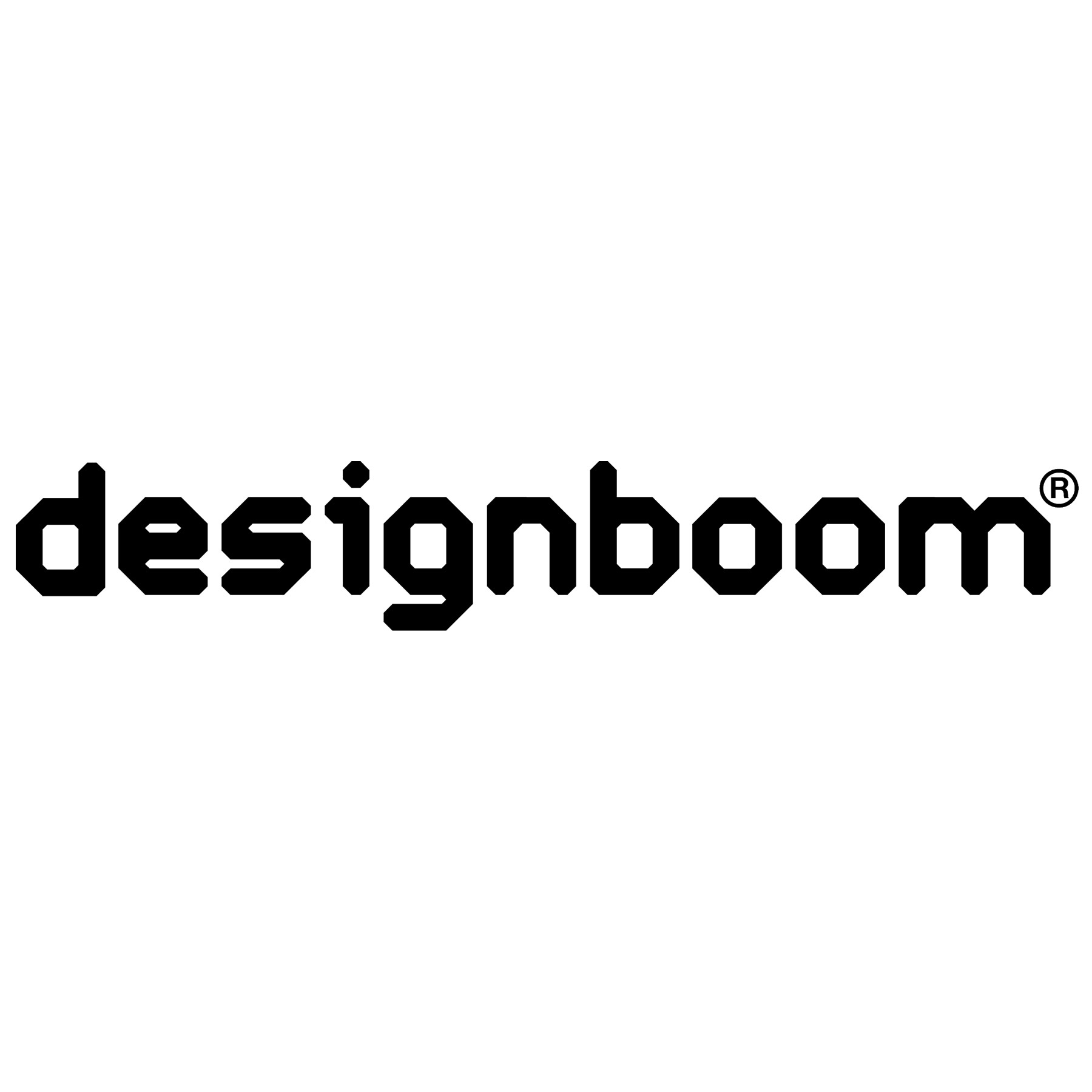
Designboom

Contemporist
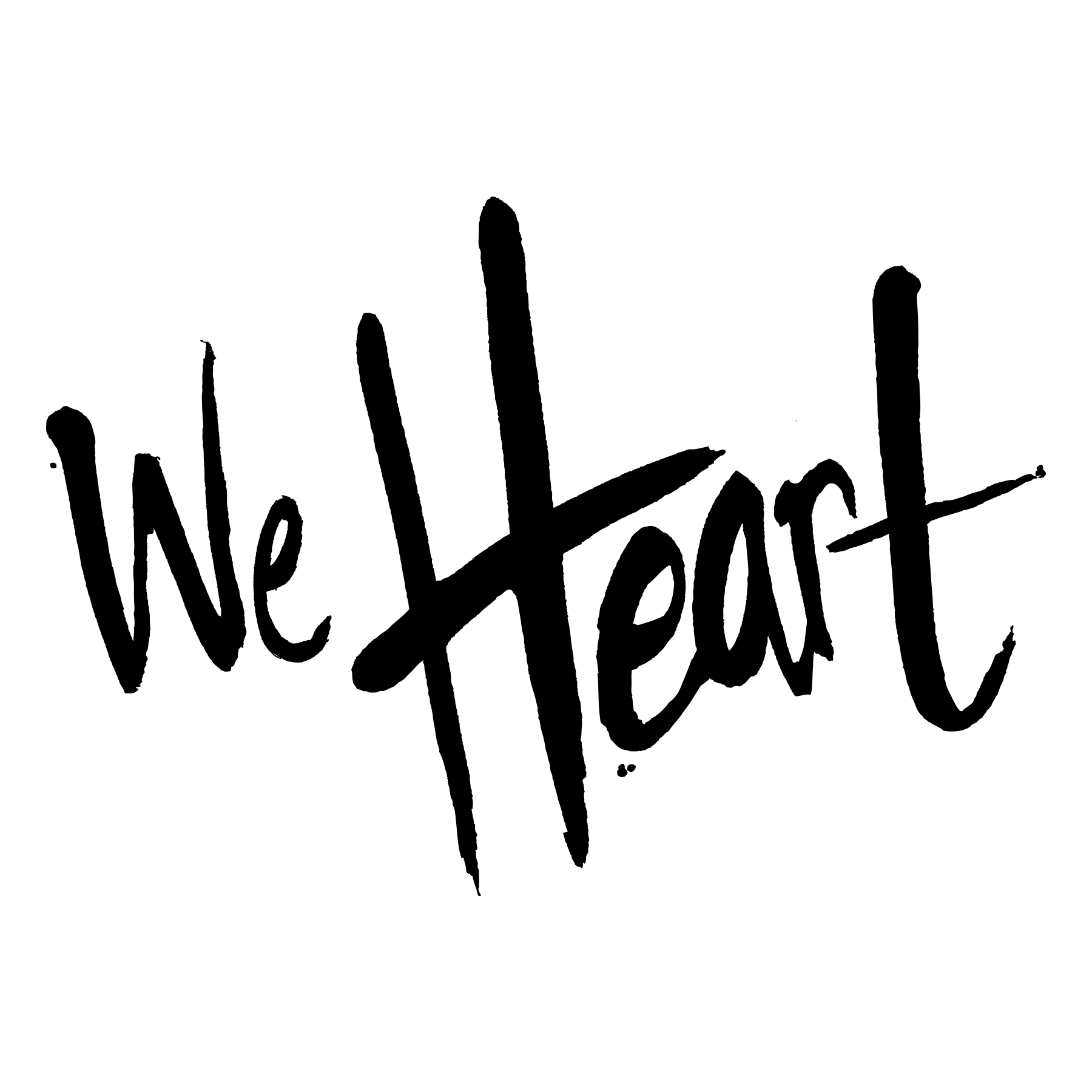
We Heart
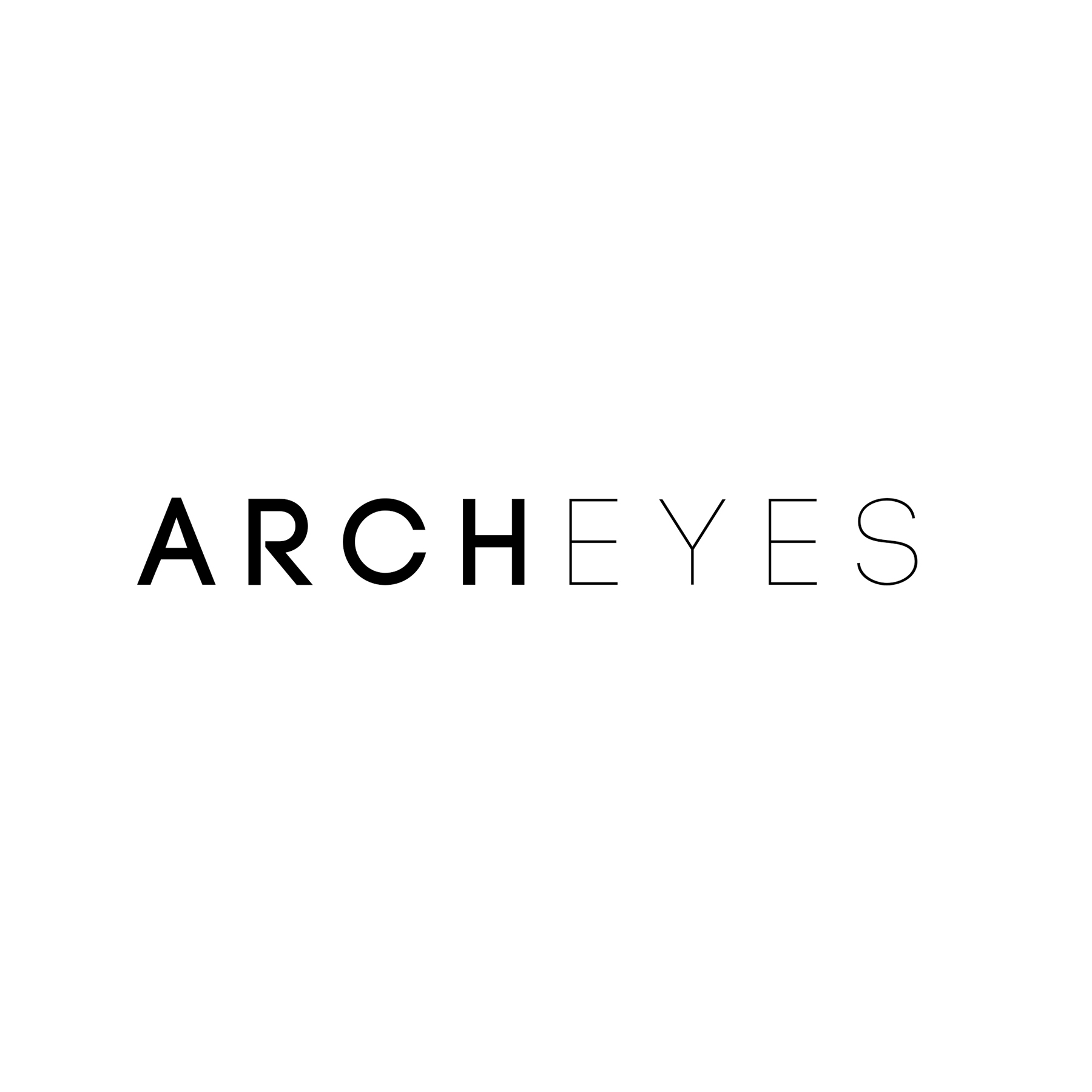
ArchEyes

Journal du Design

IdN World

Inspiration Grid

Graphic Competitions

deBop

Inkult Magazine
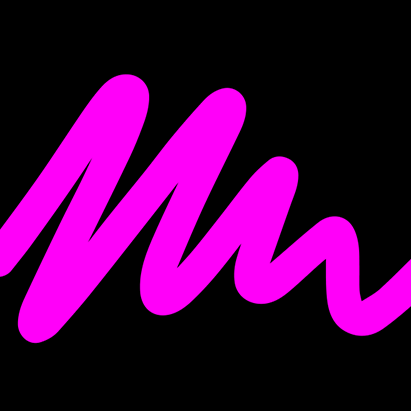
Infodesigners
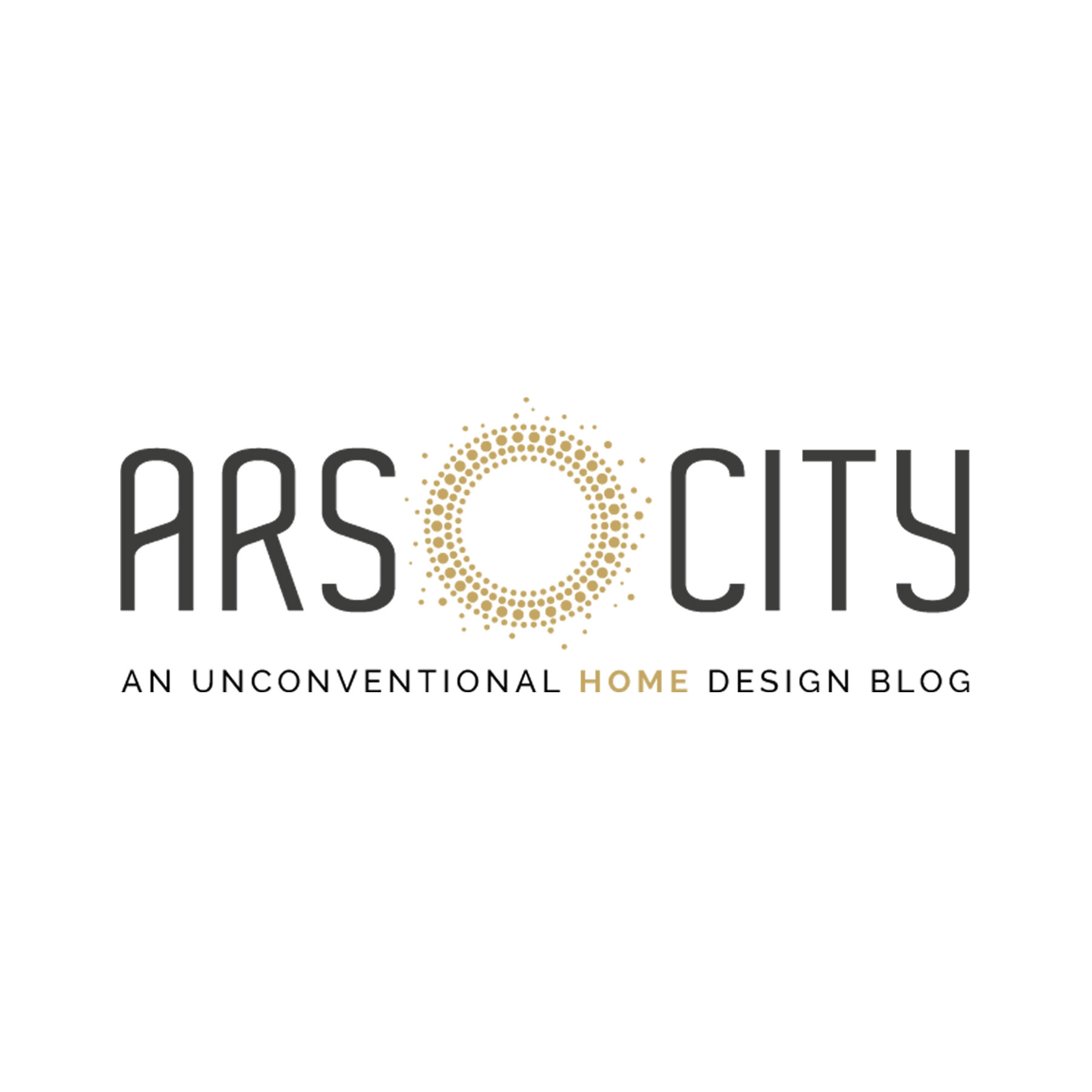
ArsCity
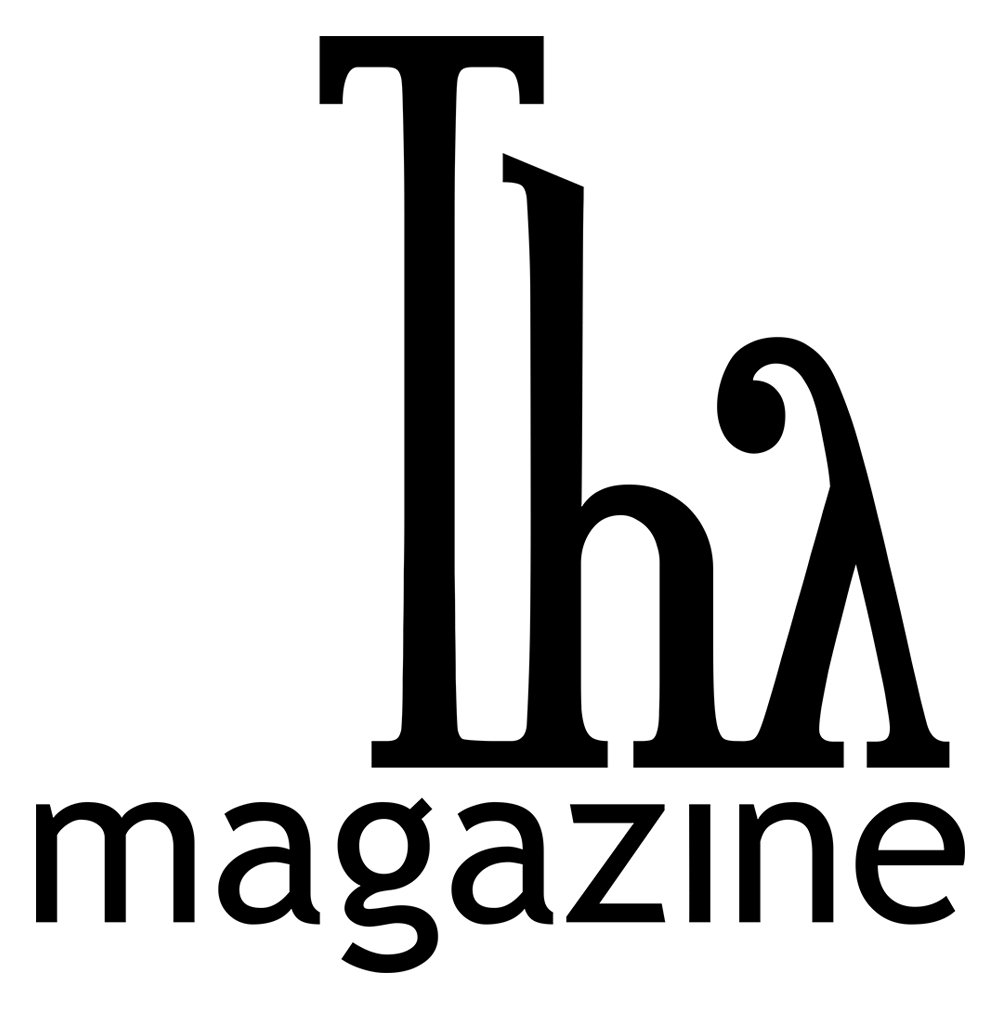
Thy Magazine

FunDesign.TV

DesignWant
Robotics Awards
Submission Now Open!
Join Robotics Design Awards today and achieve international acclaim!
Register for Free Upload Your RoboticsWorld's Best Designs
Explore the Wonderful World of A' Design Award
Discover World's Leading Designers, Star Architects, Greatest Innovators and Best Brands
making a positive impact with good design that benefit and advance society.
Enter your work now for a chance to join the ranks of the World's Leading Brands, Designers and Architects.
Join A' Design Award
Feel Good with A' Design Award : It's completely FREE to sign up for an account, Without any obligations to upload a design or nominate a work. Uploading your work is FREE, and you keep your copyrights. Getting a Preliminary Score is FREE and confidential, with no obligations to nominate. If you decide to nominate, there is a one-time fee to have your work voted by grand jury panel. If you win, there are no contractually obligated winner fees for Professional, Digital and Vision Edition laureates. The comprehensive and complete A' Design Prize is provided FREE to eligible Professional Edition winners!
Sign-Up for Free Now Discover A' Design PrizePreliminary Deadline Ends in:
Don't miss the opportunity to get a FREE Preliminary Score for your design!
Get Your Free Preliminary Score NowRegister now to receive:
- Indicative and free preliminary scores
- Additional jury feedback and suggestions
- Opportunity to improve your presentation
The registration process is simple:
- Create a free account
- Upload your design for free
- Receive your Preliminary Score within a few days
